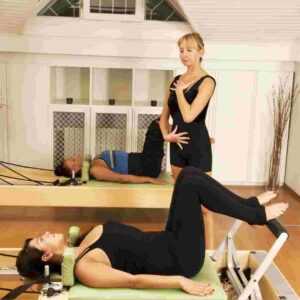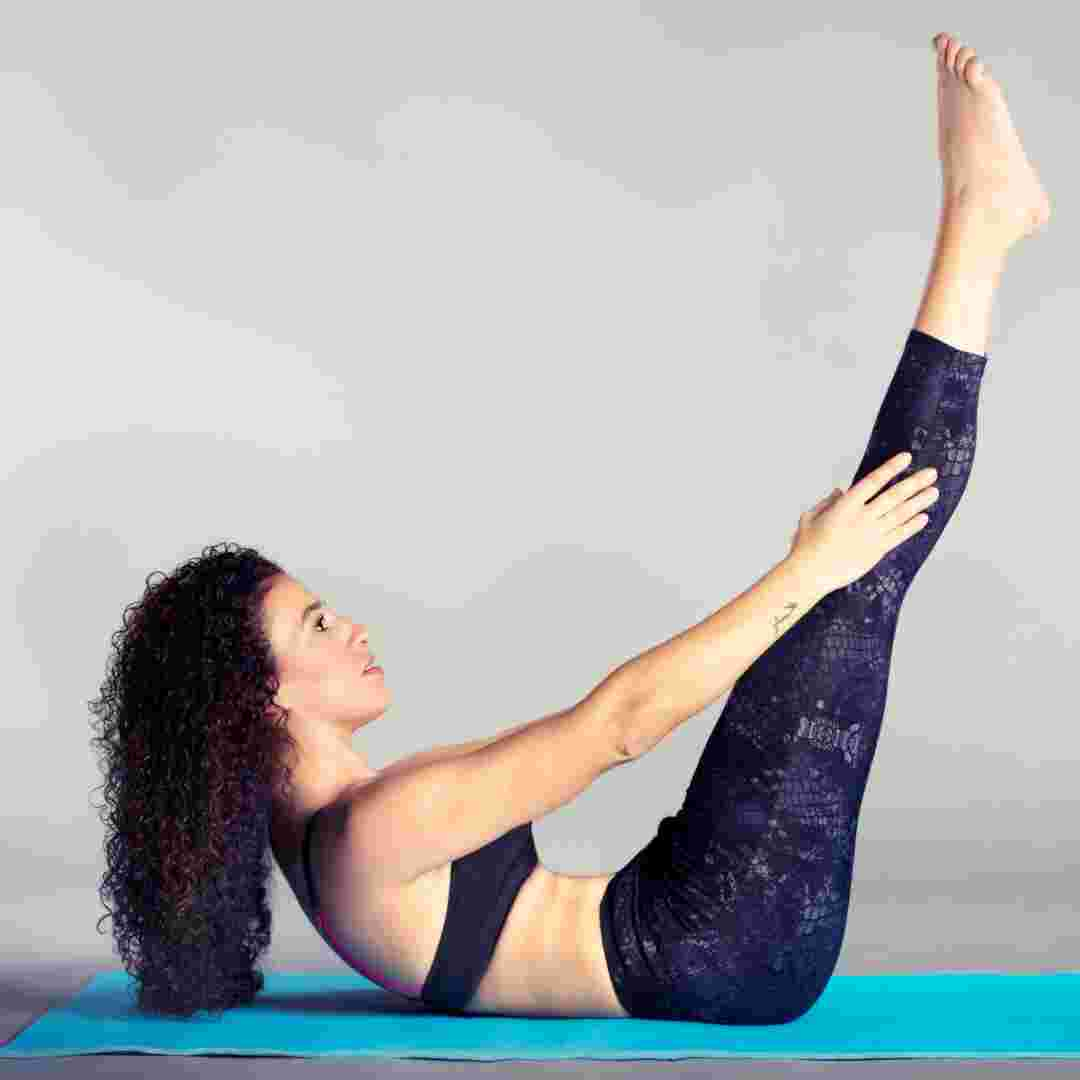Contents Table
Introduction
Correct Pilates Reformer Alignment
Step-by-Step Pilates Reformer Spring Adjustment Guide
Tips for Pilates Reformer Footbar and Strap Adjustment
Q&A
Conclusion
"Get the most out of your Pilates Reformer with these simple adjustment tips."
Introduction
First, align the carriage before adjusting a Pilates reformer. Then, set the footbar, straps, and springs for your workout. Finally, adjust the headrest and shoulder blocks for proper alignment and comfort during exercise.
Correct Pilates Reformer Alignment
Pilates is a popular exercise that strengthens core muscles, improves flexibility, and aligns the body. Reformers are popular Pilates equipment. The reformer may be adapted to different body shapes and fitness levels. How to align the Pilates reformer is covered in this article.
Before altering the reformer, we must grasp its essential components. The reformer has a carriage that slides on rails, a footbar, and resistance springs. The carriage is hooked to ropes and pulleys for various workouts.
Make sure the reformer is level before changing it. Adjust the machine's bottom feet. Adjust the reformer's feet to prevent wobbling. Adjust the footbar after levelling the reformer.
The footbar anchors feet during exercises and adjusts to leg lengths. Slide the footbar up or down by loosening the locking mechanism. The bar should be high enough to fully extend the legs without lifting the hips off the carriage.
Adjust the springs to the desired resistance. Spring resistance is color-coded, with lighter springs offering less resistance and heavier springs more. Spring attachment and detachment from the carriage and footbar adjusts them.
Consider the person's fitness and ability when modifying the springs. Beginners can start with lighter springs and increase resistance as they strengthen. Advanced users may select heavier springs for muscle challenge.
Reformer alignment is essential. Shoulders should be relaxed and spine neutral. Place feet hip-width apart and knees aligned with hips. Arms should be outstretched and hands on ropes.
Maintaining good form and alignment during reformer movements is crucial. This prevents damage and ensures effective exercise. Core, leg, and arm muscles can be targeted using the reformer.
In conclusion, Pilates reformer adjustment is crucial to safe and effective use. A effective workout requires appropriate machine levelling, footbar and spring adjustments, and form. These instructions let users customise the reformer to their needs and reach their fitness goals.
Step-by-Step Pilates Reformer Spring Adjustment Guide
Popular Pilates reformer equipment is used for numerous exercises. This machine may be customised for different body types and fitness levels. Spring adjustment is crucial to Pilates reformer use. Adjusting the springs which give resistance and support during workouts might improve your workout. This article shows how to change Pilates reformer springs step-by-step.
First, learn about the Springs
Before adjusting the springs, learn about their types and functions. Pilates reformers have main, long, short, and arm springs. The main springs supply most exercise resistance, making them crucial. Exercises that require greater resistance employ long springs, while those that require less use short springs. Arm springs are used for arm exercises.
Step 2: Adjust Main Springs
The reformer is where to alter the main springs. They are normally fastened to the carriage at the machine's foot. Increase resistance by adding springs. Remove some springs to reduce resistance. Use the machine's spring hooks to add or remove springs. As needed, attach or detach the spring from the carriage.
Step 3: Adjust Long Springs
Long springs must be placed on the reformer for adjustment. They are normally affixed to the tower at the machine's head. To enhance resistance, raise the spring hook on the tower. Lowering the spring hook on the tower reduces resistance. Turn the tower tension knob to adjust long spring tension.
Step 4: Adjust Short Springs
Position the short springs on the reformer to modify them. They are normally fastened to the carriage at the machine's foot. To enhance resistance, raise the spring hook on the carriage. Lowering the spring hook on the carriage reduces resistance. Turn the carriage tension knob to adjust short spring tension.
Step 5: Adjust Arm Springs
Position the arm springs on the reformer to adjust them. They are normally affixed to the tower at the machine's head. To enhance resistance, raise the spring hook on the tower. Lowering the spring hook on the tower reduces resistance. Turn the tower tension knob to adjust arm spring tension.
Step 6: Springs Test
After adjusting the springs, test them to ensure proper alignment. Work up from low resistance as you get used to the machine. Make sure the springs challenge your muscles without straining them.
In conclusion, changing your Pilates reformer springs is crucial to its proper use. These simple procedures let you adjust resistance and support to your physique and fitness level. Check the springs and adjust as needed for a safe and effective workout. You can utilise your Pilates reformer to reach your fitness goals and improve your health with a little practise.
Tips for Pilates Reformer Footbar and Strap Adjustment
The Pilates reformer is a popular exercise machine that improves flexibility, strength, and balance. The reformer has a carriage that moves on rails, a footbar, and straps to hold the feet and hands during workouts. Adjusting your Pilates reformer footbar and straps ensures proper and safe exercise. Instructions for adjusting the Pilates reformer footbar and straps are provided in this article.
Footbar Adjustment
The Pilates reformer's footbar supports the feet during exercises. Height can be adjusted on the footbar to suit different body types and workout needs. Steps to modify the footbar:
1. Find your reformer's footbar lock. Reformer bases commonly have locking mechanisms at the footbar.
2. Pull the lever or press the button to unlock the footbar.
3. Adjust the footbar height. Your footbar should be high enough to do the exercises safely and pleasantly.
4. Push the lever or button back to lock the footbar after adjusting it.
Strap Adjustment
The Pilates reformer straps hold feet and hands during movements. Change the straps' length to suit your body and exercise needs. Follow these instructions to adjust straps:
1. Find your reformer's strap adjustment mechanism. The adjusting mechanism is normally near the reformer carriage.
2. Pull or squeeze the lever to release the strap adjustment mechanism.
3. Pull or release excess strap material to lengthen the straps. Adjust the straps to an appropriate length for safe and comfortable workout.
4. Push the lever or button back to lock the straps after adjusting them.
Tips for Footbar and Strap Adjustment
Here are some Pilates reformer footbar and strap adjustment tips:
1. Lock the footbar and straps before exercising.
2. Make sure the footbar and straps are the right height and length for your exercises.
3. Consult the user instructions or a professional Pilates instructor for footbar and strap adjustments.
4. Check footbar and strap wear and replace as needed.
Conclusion
Adjusting your Pilates reformer footbar and straps ensures proper and safe exercise. Following these guidelines, you can adjust the footbar and straps to a height and length that makes exercises comfortable and safe. Check the footbar and straps for wear and replace if needed. Your Pilates reformer may give years of safe, effective exercise with correct adjustment and maintenance.

Q&A
1. How do I adjust the Pilates reformer footbar?
Release the locking mechanism and slide the Pilates reformer footbar up or down. Relock the mechanism to secure the footbar.
2. How can I modify Pilates reformer resistance?
Use Pilates reformer back springs to change resistance. Spring additions enhance resistance, while spring removal decreases it.
3. How do I modify Pilates reformer shoulder blocks?
Slide the Pilates reformer shoulder blocks up or down by releasing the locking mechanism. Relock the mechanism to secure the blocks.
Conclusion
Conclusion: Before adjusting a Pilates reformer, check the carriage. Then, set the spring tension for your experience and workout intensity. Finally, fit the foot bar and straps to your dimensions and comfort. Consult a professional Pilates instructor for appropriate technique and safety.


